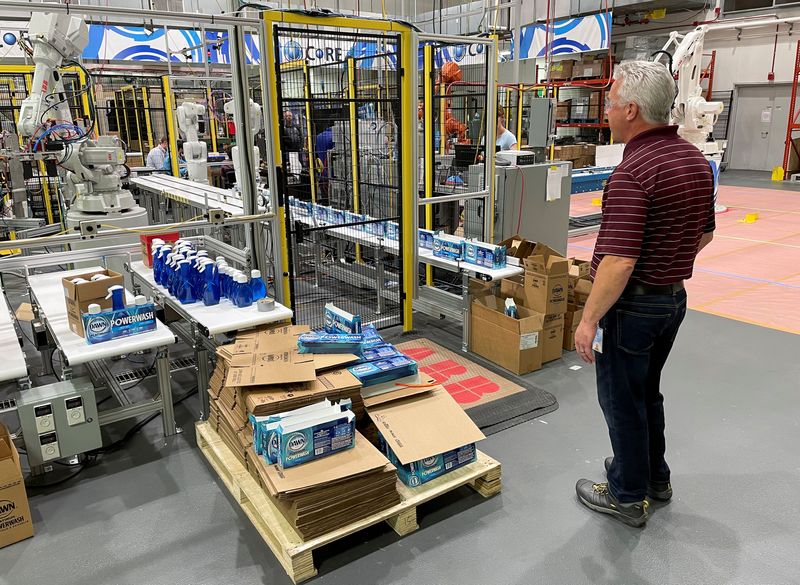By Ananya Mariam Rajesh and Jessica DiNapoli
(Reuters) -Tide maker Procter & Gamble (NYSE:) reported a surprise drop in quarterly sales for the second time in a row, as price-conscious consumers in its major markets, the United States and China, switched to cheaper brands of health and family care products.
Economic uncertainty in the U.S. market – which accounts for nearly half of P&G’s total sales – has pushed customers mainly from the lower-income groups to discount-offering rivals, and cheaper private-label brands.
A recent research note from a Wall Street analyst, citing NielsenIQ data, showed that P&G’s overall market share growth was flat in August and September. But P&G CFO Andre Schulten said on Friday there were “no indications that the consumer is not with us.”
Meanwhile, growth in P&G’s first-quarter organic sales in North America slowed to 4% from 7% seen a year earlier.
“Consumers aren’t feeling good out there after the bout of inflation we’ve had over the recent years, so we need an improvement in sentiment…for a company like this to do better,” said Don Nesbitt, senior portfolio manager at F/m Investments, which has a stake in P&G.
Rival packaged food manufacturer Nestle on Thursday noted a weak demand environment would continue, flagging pressure from weaker economies such as Latin America, and cut its annual sales forecast.
Besides, a prolonged property crisis and rising youth unemployment have resulted in a grim demand environment in China, which has impacted P&G’s sales volumes in the country.
China makes up for the bulk of P&G’s international revenue, which accounts for more than half of the company’s total sales.
“China, as we had expected, continues to be softer from a consumption standpoint … the market continues to be weak and will be weak…for a number of quarters to come,” CFO Schulten said, adding that P&G, however, has a renewed plan for product launches and category expansions in the country.
Schulten said the company would launch a slate of new and improved products in the second half of the year, which should sustain growth and “also (add) some level of acceleration” in the core business.
P&G is looking to “rejuvenate” parts of its Olay beauty business, Schulten said, adding that Melts, the brand’s dissolving face wash cubes, are doing very well.
The company is also making progress on the industrialization of Tide Evo, an eco-friendly laundry detergent in a tile form, as it prepares to launch across the United States. Consumers have been testing new laundry detergent formats.
Brian Jacobsen, chief economist at Annex Wealth Management, said, in recent years a relatively stronger consumer tilted the balance towards U.S. growth being the main driver, but now, “that is trickier due to the competitive landscape in the US, especially with the consumer revolting against price hikes.”
The main volatility in the business is, however, entirely introduced by China and by the situation in the Middle East, P&G noted.
In some Muslim majority countries, people have called for boycotting P&G products because of its connections to Israel.
The company reported a 0.6% fall in first-quarter net sales to $21.74 billion, compared with analysts’ estimates of a 0.2% rise to $21.91 billion.
P&G maintained its annual organic sales growth forecast of a 3% to 5% rise and core earnings per share expectation of $6.91 to $7.05.
The company, which has been reeling in years of steep price hikes with some promotions, reported a 1% rise in average prices across its product categories, and a 1% gain in overall organic volumes in the reported quarter.

Higher prices helped P&G report adjusted profit per share of $1.93, above analysts’ average estimate of $1.90, according to data compiled by LSEG.
Shares of the Dawn dish wash maker were up marginally.

